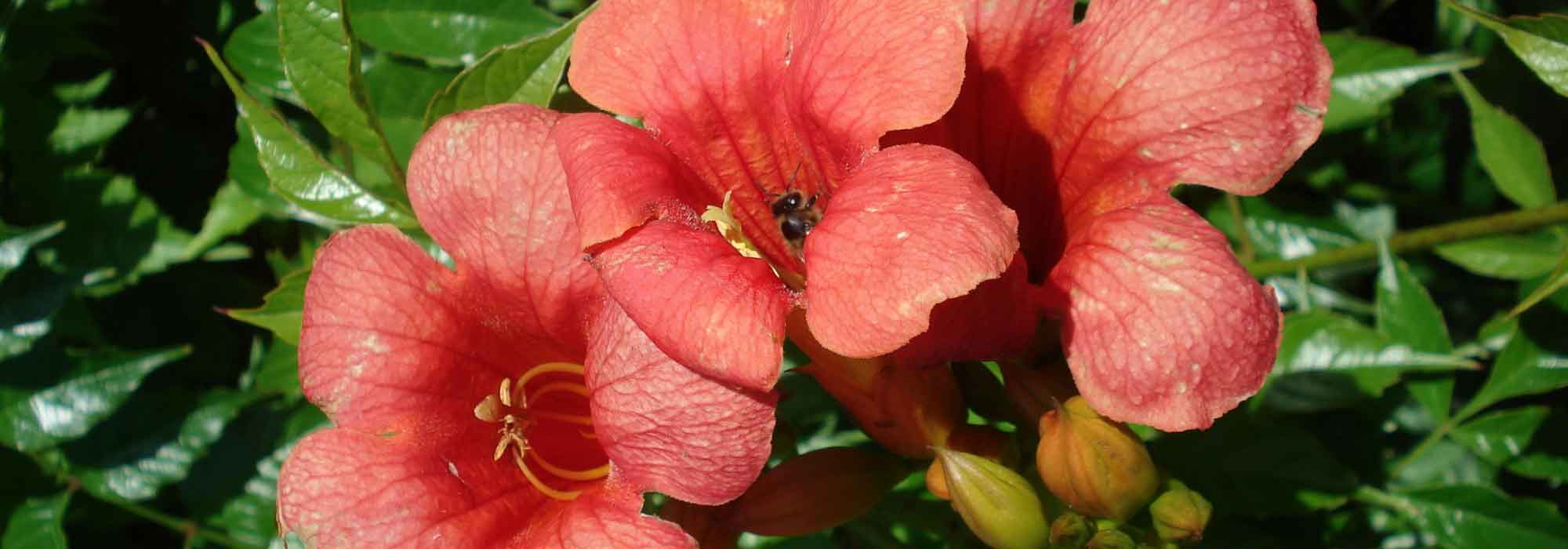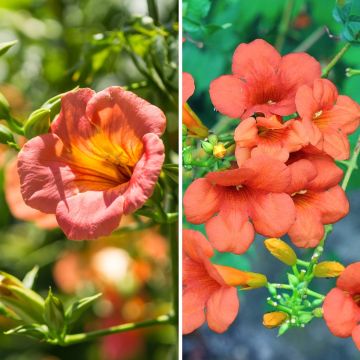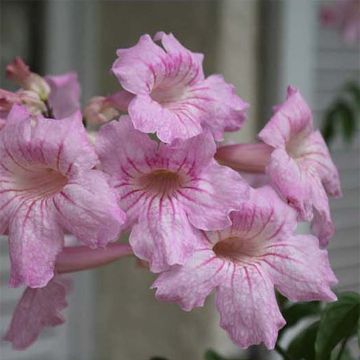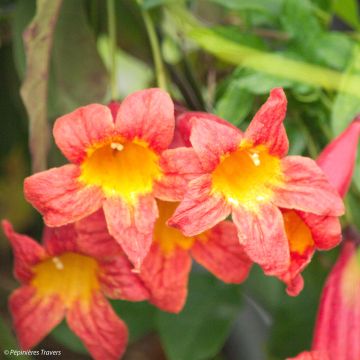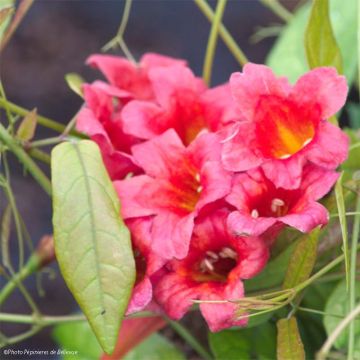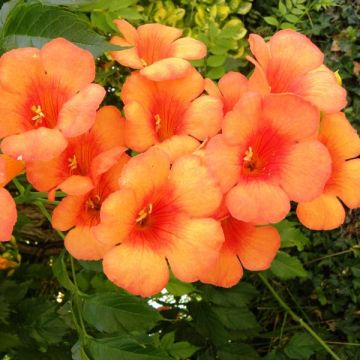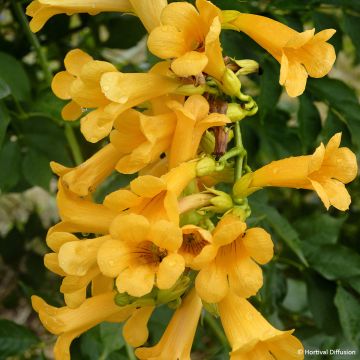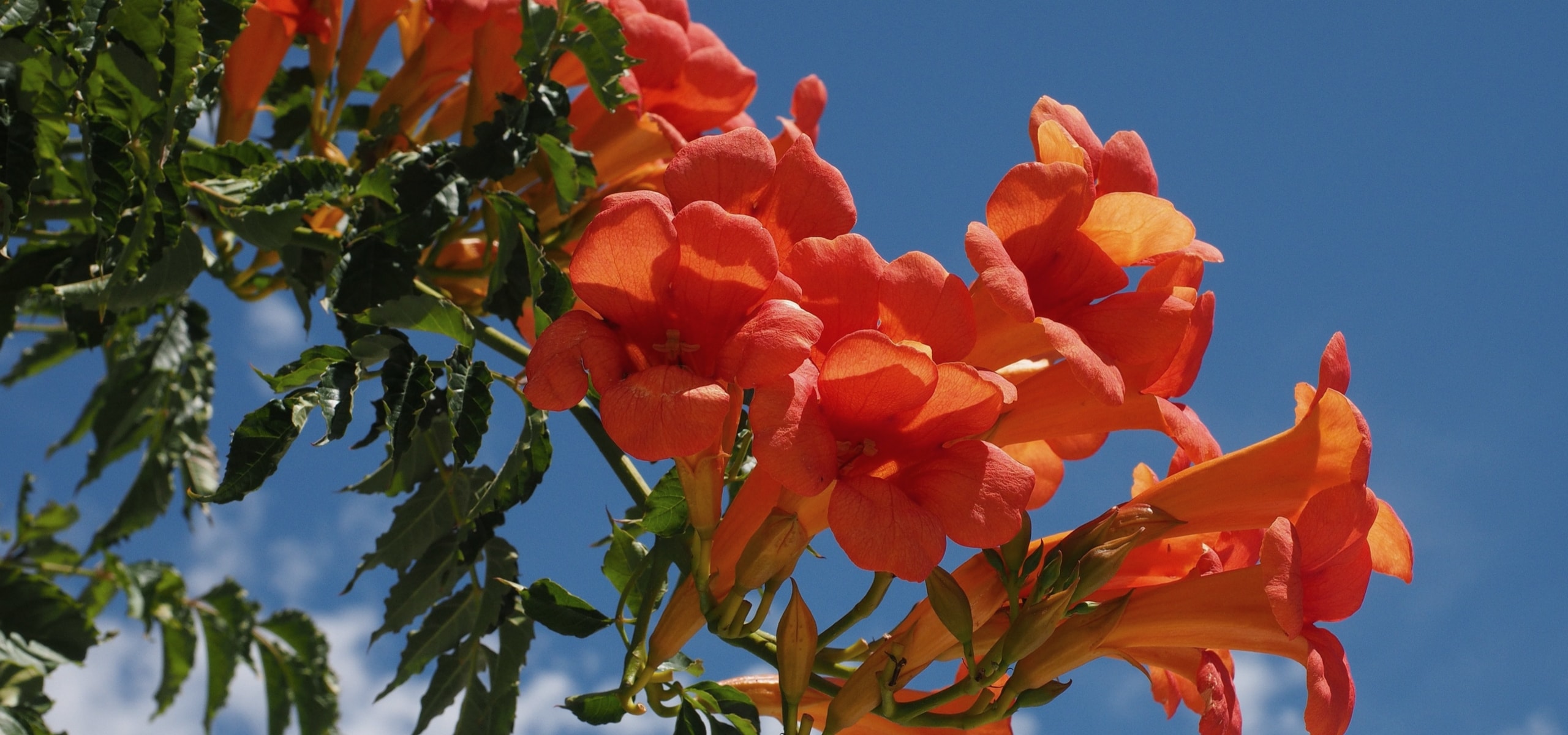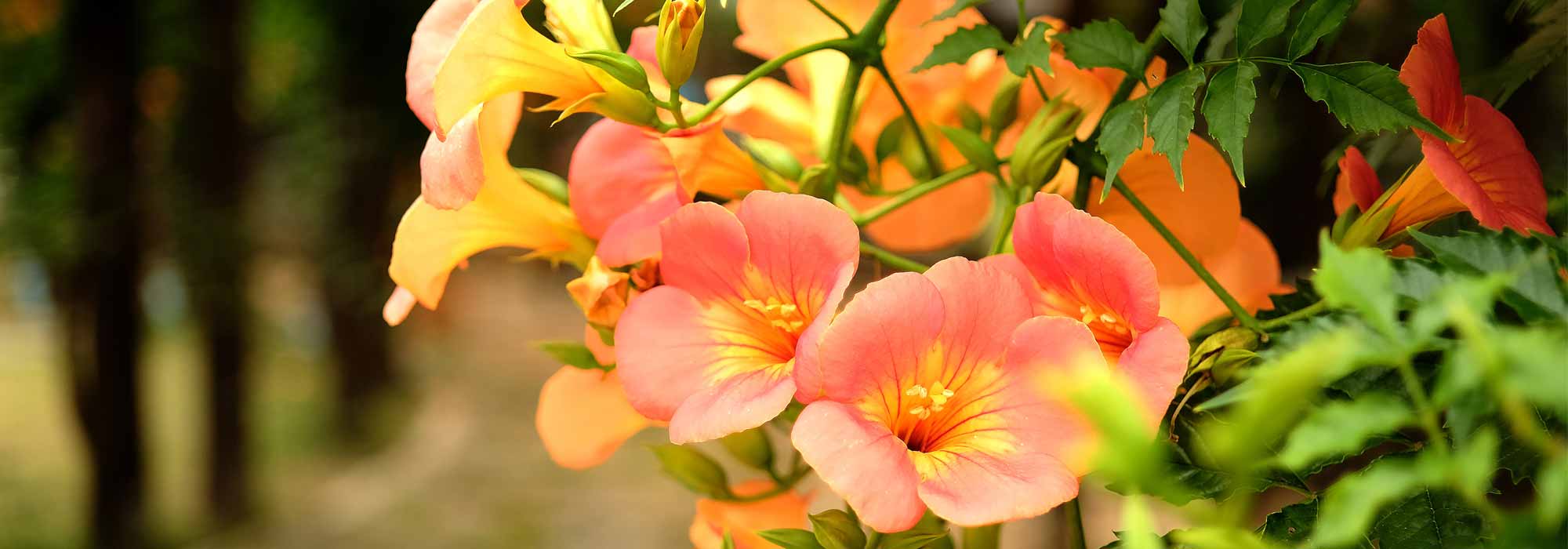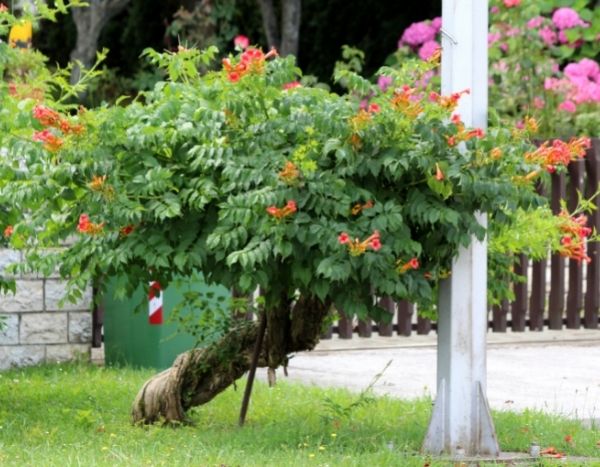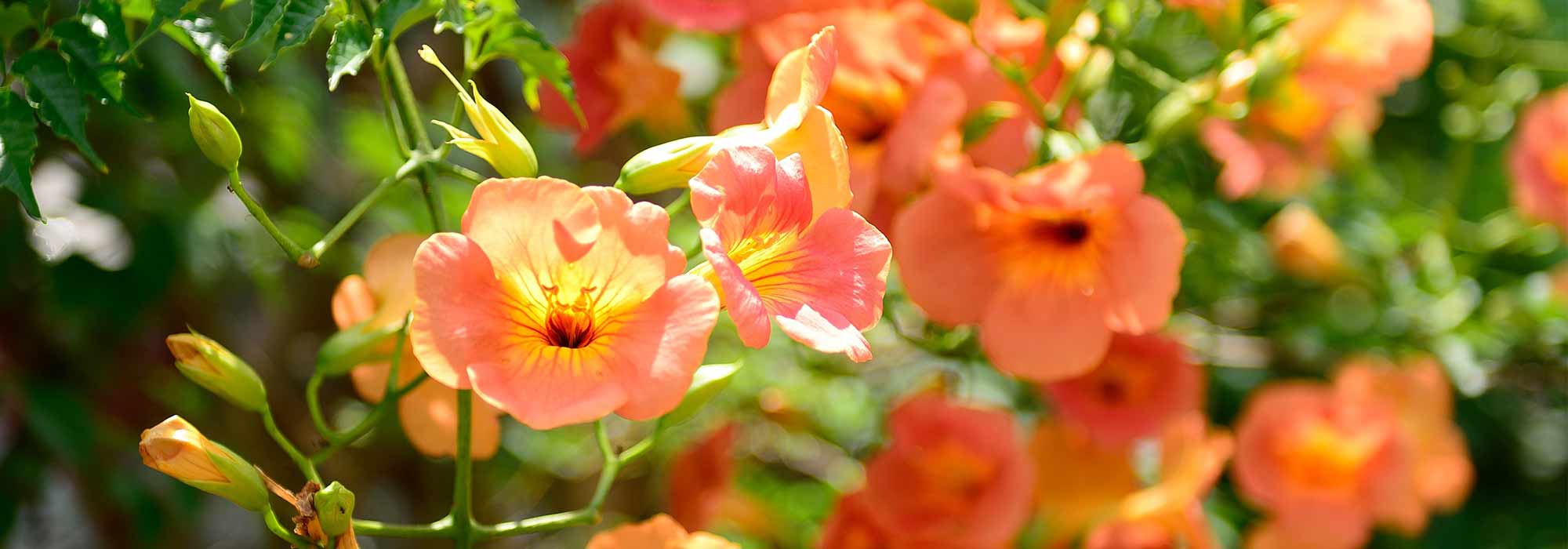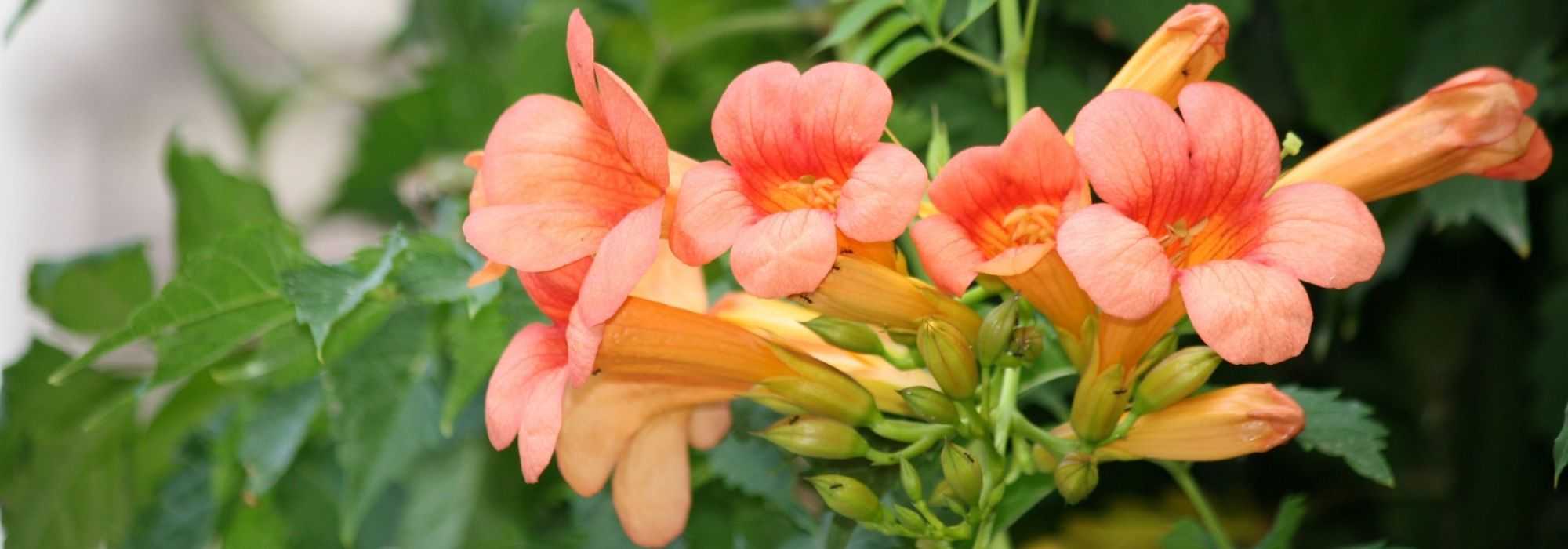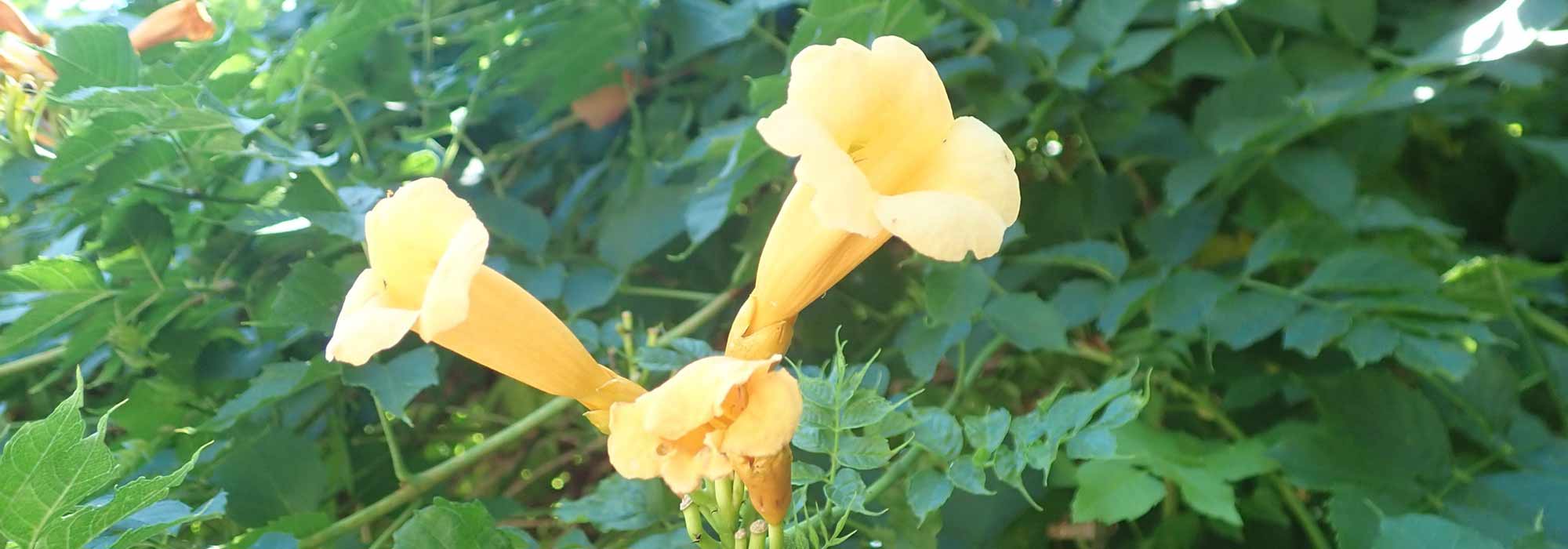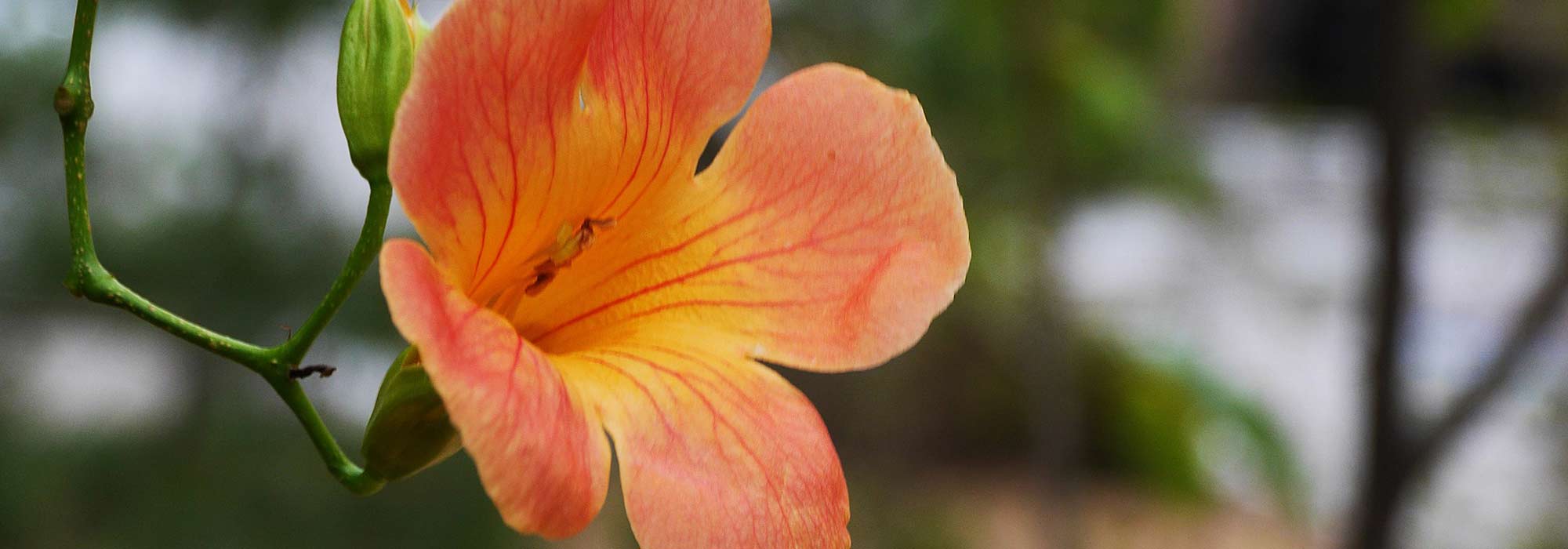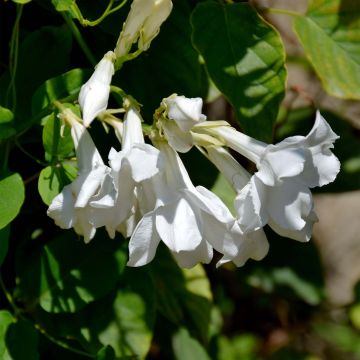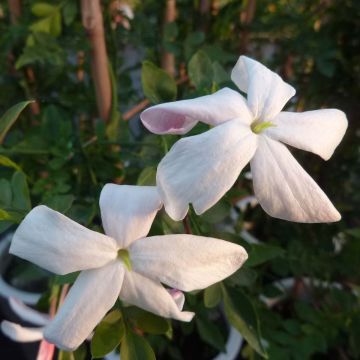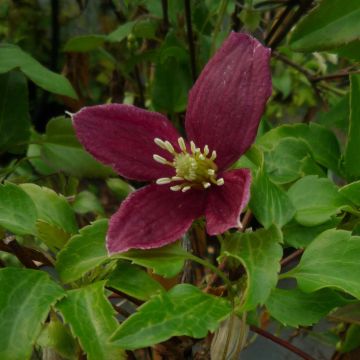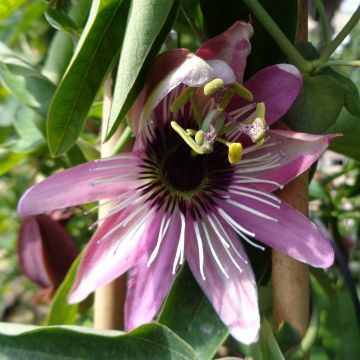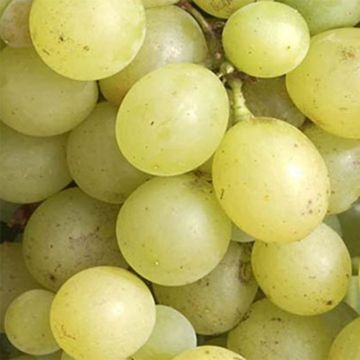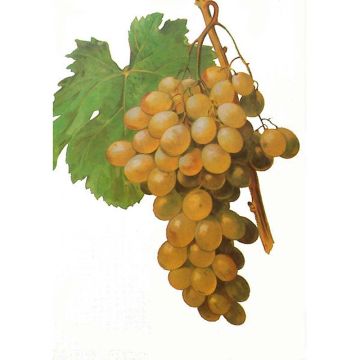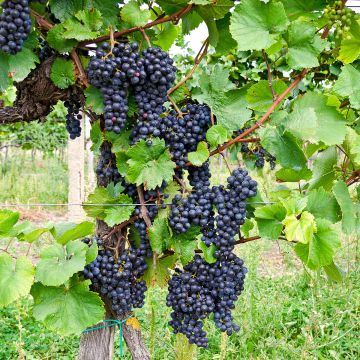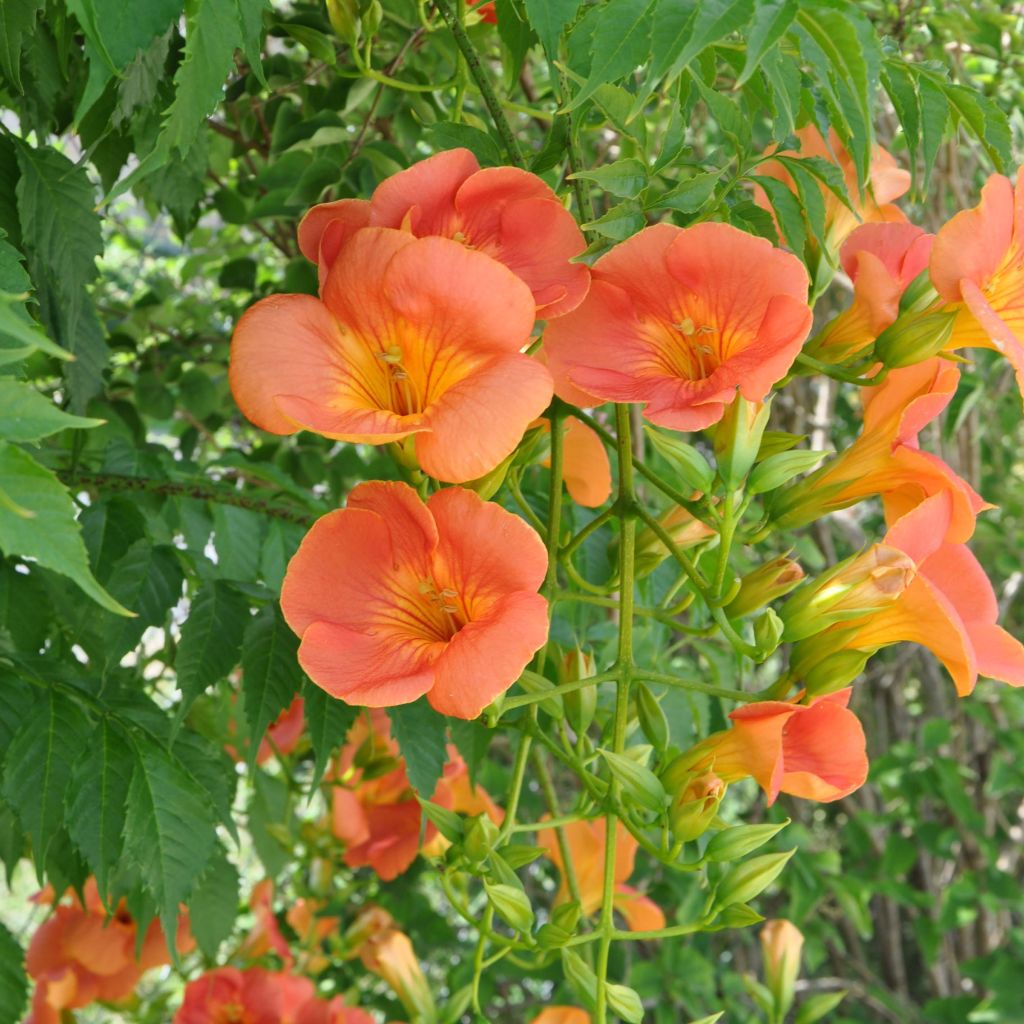

Campsis grandiflora
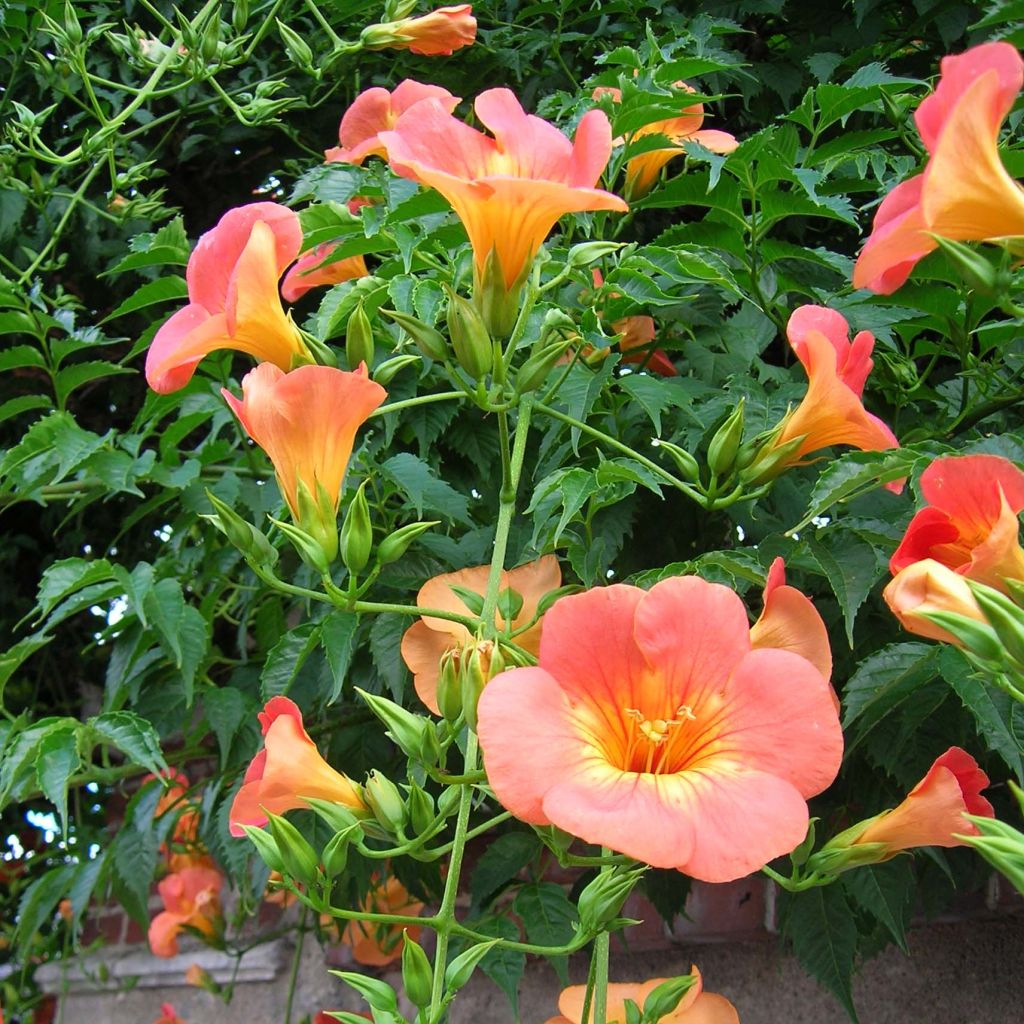

Campsis grandiflora
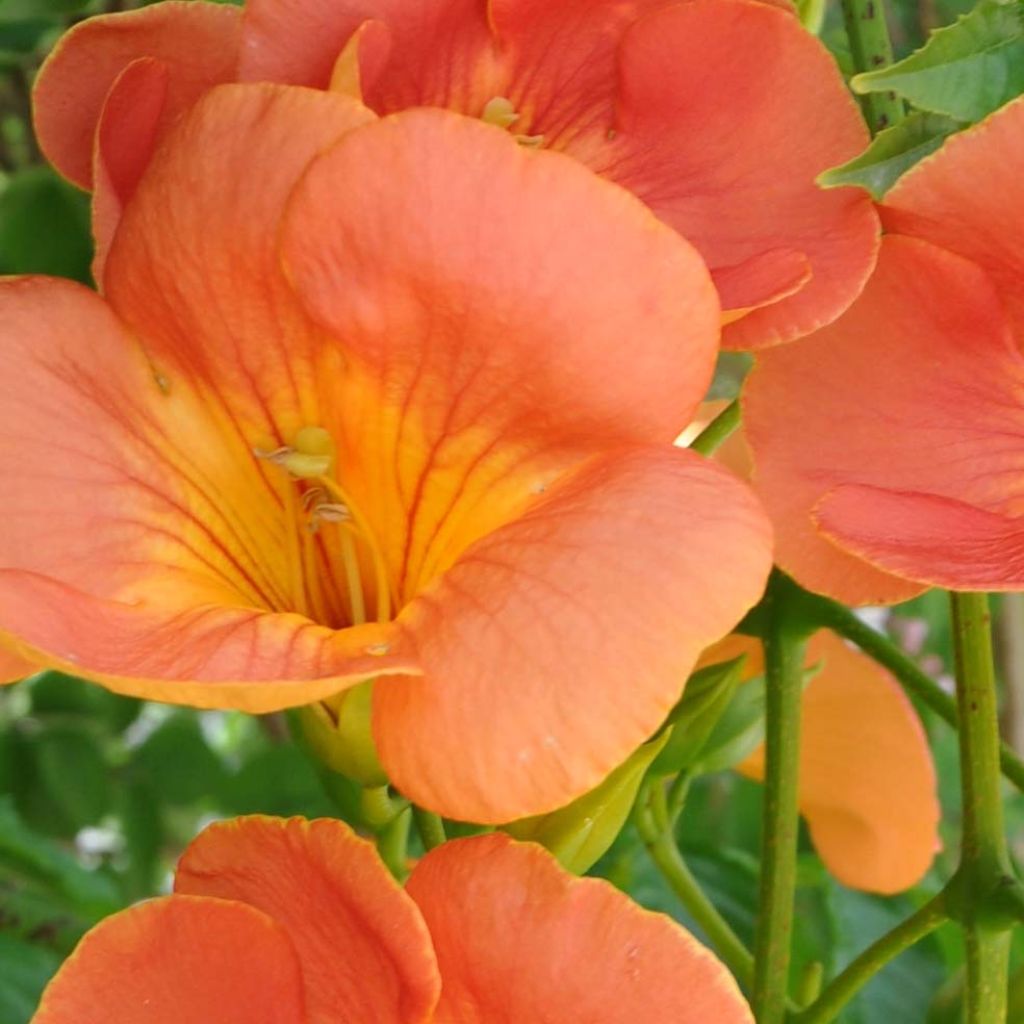

Campsis grandiflora
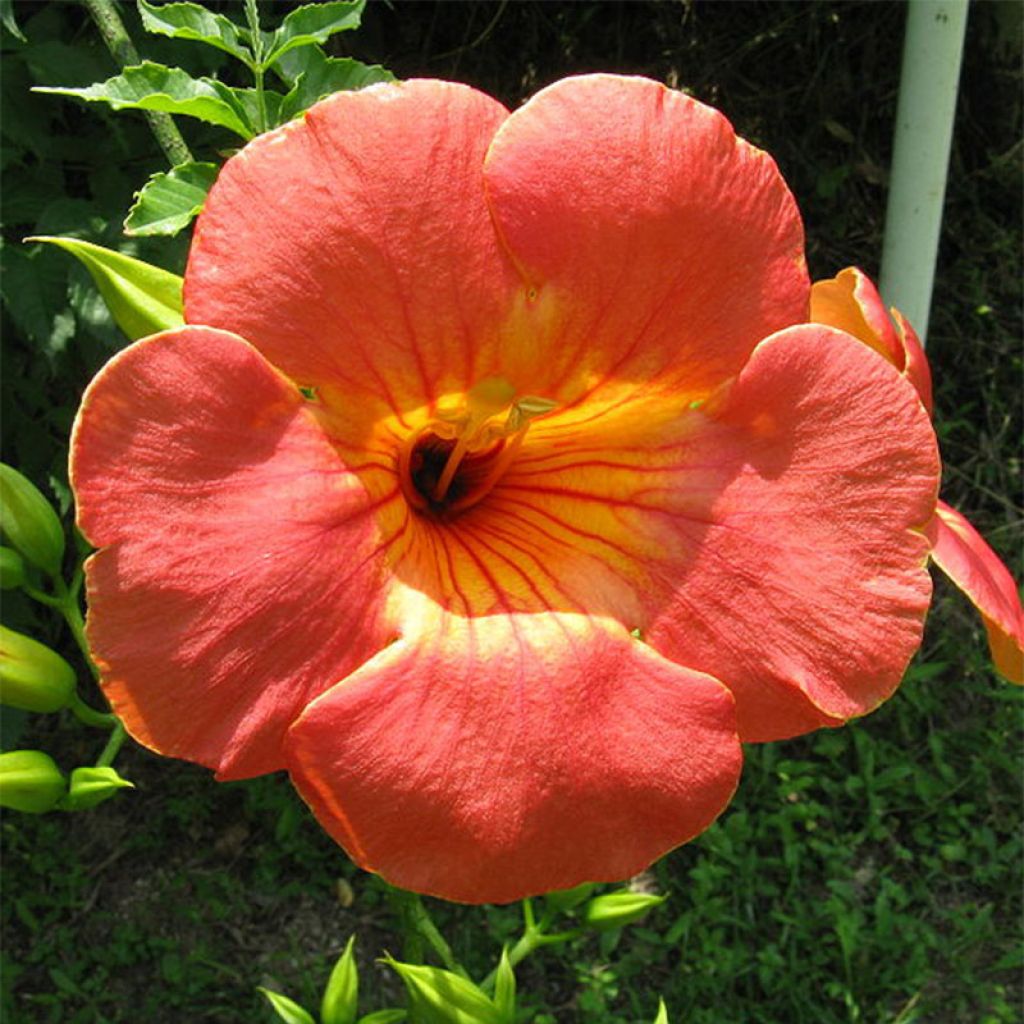

Campsis grandiflora
View more pictures
Hide images
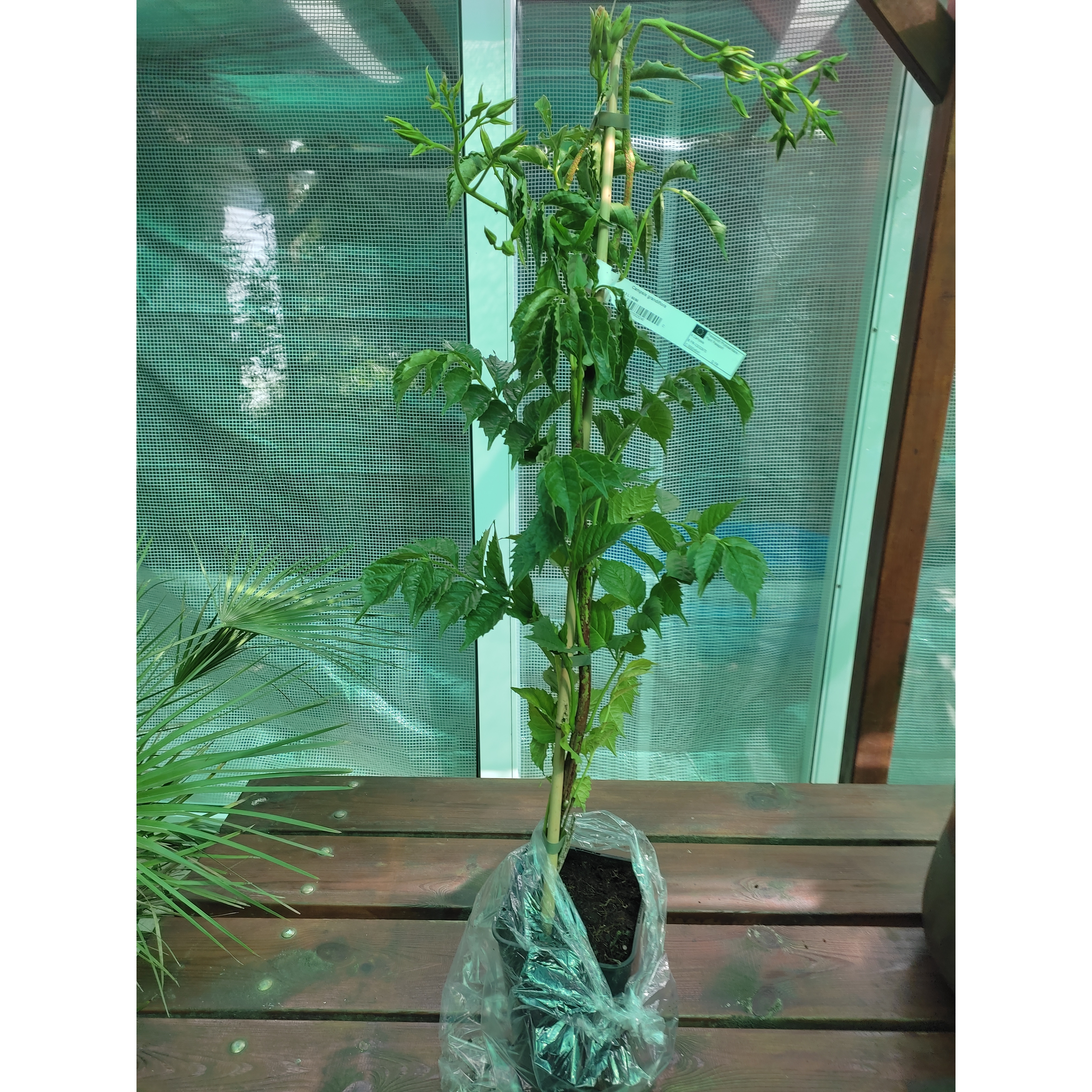
Thierry F.

Great plant
Thierry F. • BE
Campsis grandiflora
Campsis grandiflora
Trumpet Vine
took some time to settle in and get established, but they started to flower last summer... waiting for their growth
cristoph, 18/03/2025
Special offer!
Receive a €20 voucher for any order over €90 (excluding delivery costs, credit notes, and plastic-free options)!
1- Add your favorite plants to your cart.
2- Once you have reached €90, confirm your order (you can even choose the delivery date!).
3- As soon as your order is shipped, you will receive an email containing your voucher code, valid for 3 months (90 days).
Your voucher is unique and can only be used once, for any order with a minimum value of €20, excluding delivery costs.
Can be combined with other current offers, non-divisible and non-refundable.
Home or relay delivery (depending on size and destination)
Schedule delivery date,
and select date in basket
This plant carries a 6 months recovery warranty
More information
We guarantee the quality of our plants for a full growing cycle, and will replace at our expense any plant that fails to recover under normal climatic and planting conditions.
Would this plant suit my garden?
Set up your Plantfit profile →
Description
Campsis grandiflora, also known as the trumpet vine, is a stunning deciduous Chinese species with spectacular summer flowering. This deciduous climbing plant reaches several metres with its vigorous woody climbing stems equipped with a few aerial roots that allow it to cling to a wall, much like ivy. The flowering lasts at least 3 months, in the form of large pendulous panicles composed of wide flared trumpets in a very bright orange-red shade. These become more apricot over time. Campsis is not the most cold-resistant, but it adapts well to any ordinary soil and shows very rapid growth. With its heavy flowering, the plant should be trained and protected from wind that damages flowers and leaves. The climbing roots are sometimes too few on the branches to ensure proper anchoring of this trumpet creeper to fully support it.
Campsis grandiflora is a plant from the Bignoniaceae family, native to southeastern China and Japan. Introduced to France around 1800, this fast-growing deciduous climber has a bushy habit that allows it to reach 6 to 8 m (20 to 26ft) in all directions in just a few years. Its growth, however, is easily controlled by regular pruning in winter, which does not compromise flowering. The plant has a woody stump and produces fairly shallow roots. The abundant and spectacular flowering occurs after a few years of cultivation, on the young shoots. It can begin in July in mild climates, but usually begins in August and lasts until October. The large flowers bloom in the axils of the leaves, in pendulous clusters of 4 to 12 funnel-shaped flowers, 10 cm (4in) long, flaring widely into 5 lobes. Each flower opens in a very bright orange-red colour, evolving to a soft apricot shade at maturity. Each flower has a beautiful striated yellow throat where long arched stamens nest. The flowering is followed by the formation of brown pods that remain on the plant for a long time before releasing flat and winged seeds, dispersed by the wind. The deciduous foliage is composed of finely divided leaves with 7 to 9 ovate leaflets with serrated edges. It is the branches equipped with a few aerial roots that allow the plant to cling to its support.
Campsis grandiflora can be used anywhere, to cover a wall sheltered from cold winds, an unsightly building, an exposed facade, a fence, or an old wall. This very tolerant plant can withstand short frosts down to -15°C (5°F), in well-drained soil and in a sheltered position. You can associate it, for example, with other unique climbing plants such as Akebia quinata, Actinidia kolomikta, Holboellia latifolia, or the Clematis H F Young, which is very blue, to create a colourful scene.
Campsis grandiflora in pictures
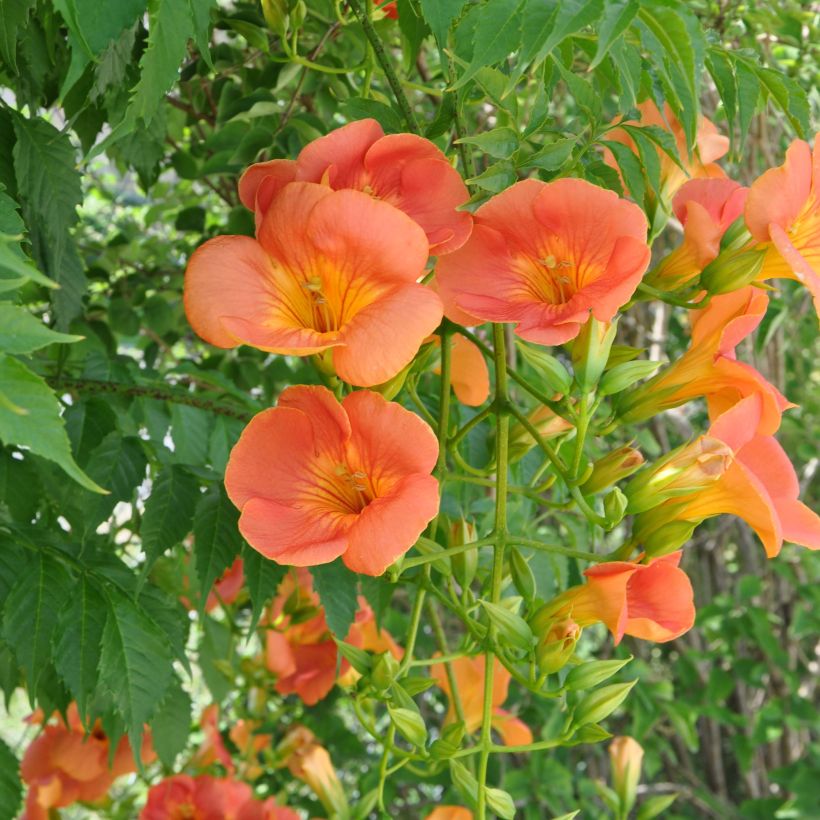

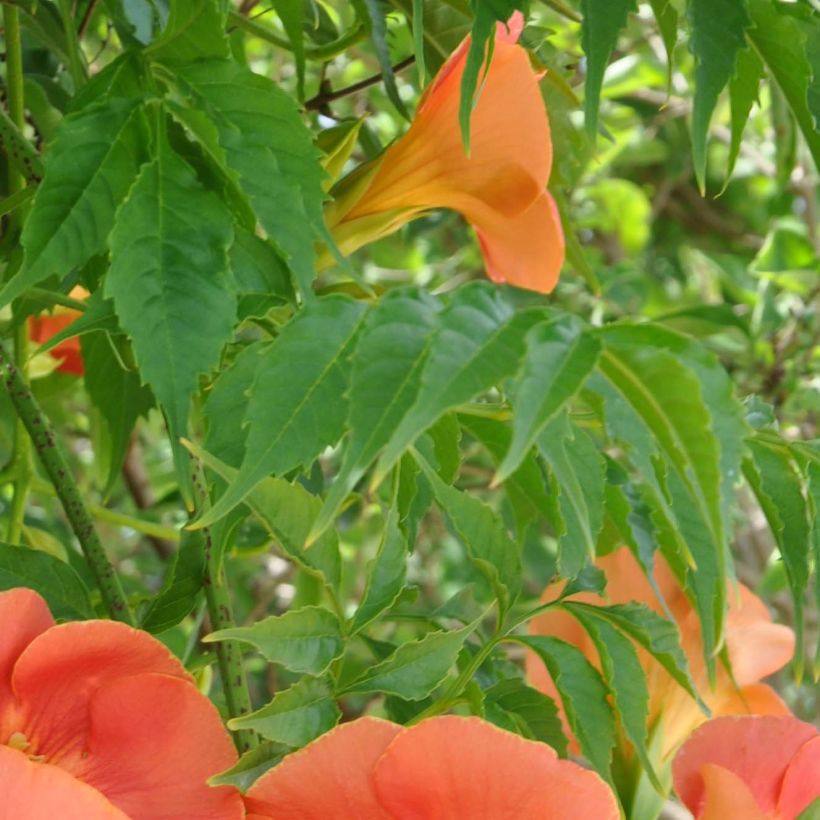

Plant habit
Flowering
Foliage
Botanical data
Campsis
grandiflora
Bignoniaceae
Trumpet Vine
Cultivar or hybrid
Other Campsis - Trumpet Creeper
View all →Planting and care
The Chinese trumpet vine is a plant that is undemanding on the nature of the soil, but it dislikes heavy, compact, poorly drained soils, where moisture can stagnate. If the soil in your garden is too heavy, incorporate coarse sand or gravel before planting. It grows in any well-drained garden soil, even if it is quite poor and chalky. It prefers a sunny position, sheltered from strong winds which cause the flowers to fall, dry out the leaf margins, and tear the plant away from its support. Plant it along a well-exposed wall or against a tree, guiding it with a stake. Water regularly in the first few summers, or in case of prolonged drought. The plant can tolerate moderate periods of drought once established, especially if it is planted in deep soil. In the first few years, protect its stump from severe frosts with a thick mulch. Pruning is not necessary. If it becomes necessary, you should prune it at the end of winter or in early spring. In August-September, remove the faded branches as well as the oldest shoots recognisable by their cracked bark.
Trumpet vines are often visited by ants that come to collect sweet exudates produced by the flowers, but also by aphids that settle at the tips of the shoots, usually without harming the plant. Powdery mildew can affect the trumpet creeper. Watch for the appearance of mealybugs and the white leafhopper.
Planting period
Intended location
Care
Planting & care advice
-
, onOrder confirmed
Reply from on Promesse de fleurs
Similar products
Haven't found what you were looking for?
Hardiness is the lowest winter temperature a plant can endure without suffering serious damage or even dying. However, hardiness is affected by location (a sheltered area, such as a patio), protection (winter cover) and soil type (hardiness is improved by well-drained soil).

Photo Sharing Terms & Conditions
In order to encourage gardeners to interact and share their experiences, Promesse de fleurs offers various media enabling content to be uploaded onto its Site - in particular via the ‘Photo sharing’ module.
The User agrees to refrain from:
- Posting any content that is illegal, prejudicial, insulting, racist, inciteful to hatred, revisionist, contrary to public decency, that infringes on privacy or on the privacy rights of third parties, in particular the publicity rights of persons and goods, intellectual property rights, or the right to privacy.
- Submitting content on behalf of a third party;
- Impersonate the identity of a third party and/or publish any personal information about a third party;
In general, the User undertakes to refrain from any unethical behaviour.
All Content (in particular text, comments, files, images, photos, videos, creative works, etc.), which may be subject to property or intellectual property rights, image or other private rights, shall remain the property of the User, subject to the limited rights granted by the terms of the licence granted by Promesse de fleurs as stated below. Users are at liberty to publish or not to publish such Content on the Site, notably via the ‘Photo Sharing’ facility, and accept that this Content shall be made public and freely accessible, notably on the Internet.
Users further acknowledge, undertake to have ,and guarantee that they hold all necessary rights and permissions to publish such material on the Site, in particular with regard to the legislation in force pertaining to any privacy, property, intellectual property, image, or contractual rights, or rights of any other nature. By publishing such Content on the Site, Users acknowledge accepting full liability as publishers of the Content within the meaning of the law, and grant Promesse de fleurs, free of charge, an inclusive, worldwide licence for the said Content for the entire duration of its publication, including all reproduction, representation, up/downloading, displaying, performing, transmission, and storage rights.
Users also grant permission for their name to be linked to the Content and accept that this link may not always be made available.
By engaging in posting material, Users consent to their Content becoming automatically accessible on the Internet, in particular on other sites and/or blogs and/or web pages of the Promesse de fleurs site, including in particular social pages and the Promesse de fleurs catalogue.
Users may secure the removal of entrusted content free of charge by issuing a simple request via our contact form.
The flowering period indicated on our website applies to countries and regions located in USDA zone 8 (France, the United Kingdom, Ireland, the Netherlands, etc.)
It will vary according to where you live:
- In zones 9 to 10 (Italy, Spain, Greece, etc.), flowering will occur about 2 to 4 weeks earlier.
- In zones 6 to 7 (Germany, Poland, Slovenia, and lower mountainous regions), flowering will be delayed by 2 to 3 weeks.
- In zone 5 (Central Europe, Scandinavia), blooming will be delayed by 3 to 5 weeks.
In temperate climates, pruning of spring-flowering shrubs (forsythia, spireas, etc.) should be done just after flowering.
Pruning of summer-flowering shrubs (Indian Lilac, Perovskia, etc.) can be done in winter or spring.
In cold regions as well as with frost-sensitive plants, avoid pruning too early when severe frosts may still occur.
The planting period indicated on our website applies to countries and regions located in USDA zone 8 (France, United Kingdom, Ireland, Netherlands).
It will vary according to where you live:
- In Mediterranean zones (Marseille, Madrid, Milan, etc.), autumn and winter are the best planting periods.
- In continental zones (Strasbourg, Munich, Vienna, etc.), delay planting by 2 to 3 weeks in spring and bring it forward by 2 to 4 weeks in autumn.
- In mountainous regions (the Alps, Pyrenees, Carpathians, etc.), it is best to plant in late spring (May-June) or late summer (August-September).
The harvesting period indicated on our website applies to countries and regions in USDA zone 8 (France, England, Ireland, the Netherlands).
In colder areas (Scandinavia, Poland, Austria...) fruit and vegetable harvests are likely to be delayed by 3-4 weeks.
In warmer areas (Italy, Spain, Greece, etc.), harvesting will probably take place earlier, depending on weather conditions.
The sowing periods indicated on our website apply to countries and regions within USDA Zone 8 (France, UK, Ireland, Netherlands).
In colder areas (Scandinavia, Poland, Austria...), delay any outdoor sowing by 3-4 weeks, or sow under glass.
In warmer climes (Italy, Spain, Greece, etc.), bring outdoor sowing forward by a few weeks.






























